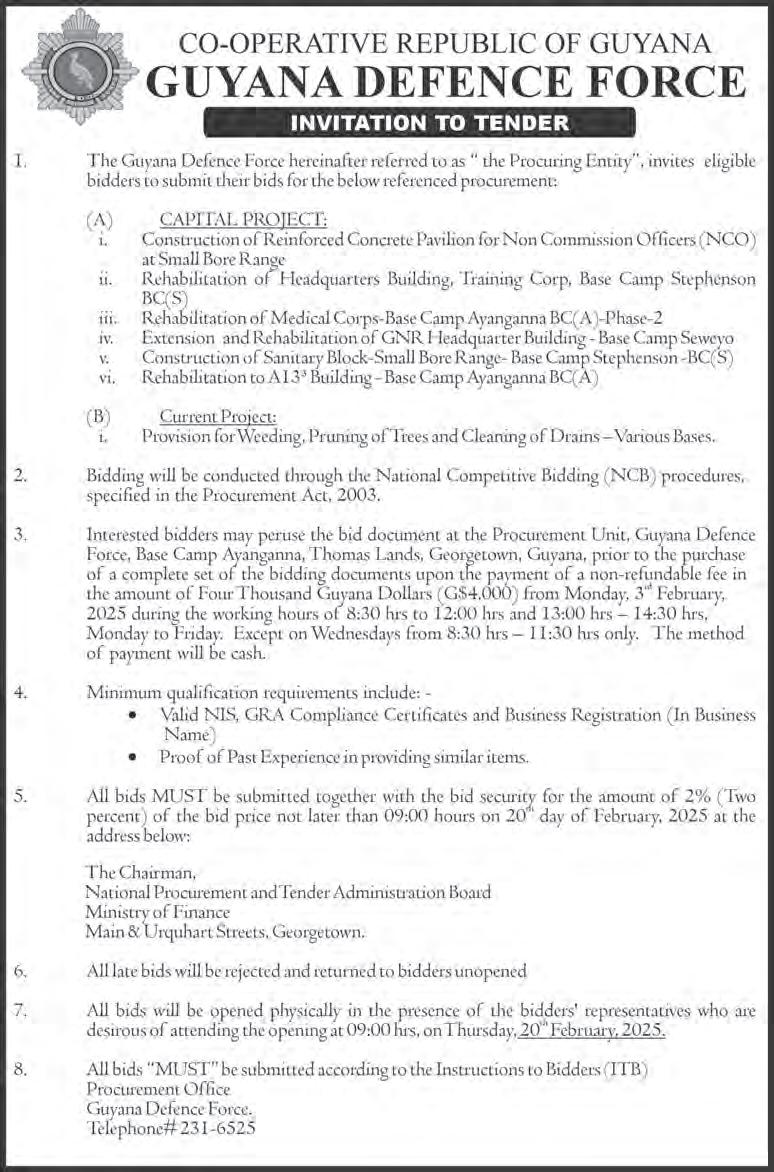Reigniting Tradition
Artist and performer talks about the art of
‘Breathing Fire’

Sean performs one of his signature tricks of ‘eating fire’ (Samuel Maughn Photo)

Sunday, February 16, 2025

Artist and performer talks about the art of
‘Breathing Fire’

Sean performs one of his signature tricks of ‘eating fire’ (Samuel Maughn Photo)

Sunday, February 16, 2025
By Michel Outridge
AYUBE KHAN is not willing to do away with a book stall he inherited from his late mother, who established the small business in the Vendor’s Arcade more than 40 years ago and is the only surviving bookstall in the establishment.
Recalling his story, Khan said his mother, Sybil Khan, had the stall selling clothing and books since he was eight years old.
As a boy, he attended St. Andrews School in the city, and after classes, of all his siblings, he was the only one who had an interest in the business and used to be there with her every day during weekdays.
He added that when his mother passed away on February 11, 2015, at the age of 74, he took over the small business and kept the doors of the stall open all these years despite it not being a
fast-cash-making venture.
“Because of how this business started by my late mother, I never want to do away with this stall and the books. It reminds me of her and the efforts she made to provide for us as a single parent,” he said.
Khan related that even before his mother passed away, she had been sick for about 16 years, and he was always there to assist with the business. He had a vested interest, which he realised he loved.
“As a boy, I used to look forward to going with my mom to the bookstall every Saturday, and of the four siblings, I was the only one who was passionate about books and the stall,” he said.
Khan told Pepperpot Magazine that the business started out as a clothing stall, but his mother had a deep love for reading, and books were her passion back then.
When the opportunity
presented itself 46 years ago, on her first trip to Trinidad and Tobago, she bought some books and posted them to Guyana.
It was then that her bookstall business took off, and she began selling books, exchanging books for a small fee until her collection grew to more than 2,000 different books in stock.
Khan explained that his mother also got books from her sister, who was living in the United States, and she sourced and bought books locally from anyone selling them.
He stated that it is just $100 to exchange a book, and he sells books for as low as $100, with the highest price being $1,200.
Keeping the Love for Books Alive
Khan said gone are the days when reading was fundamental for most young people, as today, many are more interested in smart -

phones and everything online rather than a good paperback novel.
The stall holder pointed out that a few school-aged children would stop by to look at the books, but, often, they would be scolded by their elders and hauled off elsewhere when passing through the Vendor’s Arcade, where his stall is located.

The 59-year-old stated that he is the father of four boys and resides in Eccles, East Bank Demerara.
Khan grew up in a single-parent home where his mother tried her best to provide for them. They lived in modest accommodation
injuries to her knees and was unable to work for months. Back then, they did not know where their next meal would come from.
However, the Sacred Heart Church stepped in

Khan has in stock a wide variety of books, including novels, romance, crime thrillers, and others, such as Jughead and Archie, Reader’s Digest, Nancy Drew, Danielle Steel, Mills and Boon, and James Patterson.
He told Pepperpot Magazine that next month, he will be going on vacation, and he is looking forward to bringing back some books to add to his collection.
A Business Rooted in Family and Hardship
in North East La Penitence, Georgetown.
He added that he was four years old when his father walked away and never looked back, leaving his mother to fulfil the role of both parents for him and his siblings.
Khan said things took a turn for the worse when his brother fell ill. While his mother was taking the stairs to seek medical attention for him, she fell. As a result, she suffered
after learning of her plight and provided the family with groceries for more than eight months until Khan’s mother fully recovered and went back to work at her stall.
“We had a hard life, being from a single-parent home. When mom got injured and couldn’t provide for us, it was not easy. My mom was a simple woman who worked hard for us because she didn’t have a choice, as the only breadwinner for the home.
By Shaniya Harding
FEBRUARY 11 saw Guyana join the rest of the world in celebrating the International Day for Women and Girls in Science. With Guyana’s rapidly changing landscape, women and g irls are becoming increasingly present voices in science.
In honour of this, Pepperpot Magazine sat down with four young women from the Caribbean Youth Environment Network, a region-wide environmental NGO dedicated to improving the quality of life for Caribbean youth with a focus on the environment and sustainable development. From environmental activism to the medical field, these women are the next generation of environmental scientists, biologists, and doctors, working hard to make a change and have their voices heard across all sectors.
More Than Medicine
Suphane Dash Alleyne’s journey began with an innate curiosity about the natural world. “I was always intrigued by the natural world and how things work,” she said during her interview with Pepperpot Magazine. As a young girl, Suphane developed a fascination with insects. She would collect them and observe their behaviour, giving her a deeper appreciation for the intricate systems of life.
This, she says, later inspired her to pursue the field of environmental science, as she shared, "I was always intrigued by the natural world and how things work. Even when I had assignments where I had to capture insects, I




By Shaniya Harding
IN a country known for its diverse and culturally inspired cuisine, Fabrice Williams is making waves as one of Guyana’s few sushi chefs. Driven by a passion for Asian flavours and a knack for filling market gaps, he’s not only introducing locals to the intricate art of sushi but also redefining how fast, high-quality food fits into busy lifestyles. Thr ough his restaurant and packaged sushi products, Fabrice is proving that sushi is far more than just raw fish—it’s a craft, a story, and a gateway to experiencing Guyana's evolving food scene.
Sushi Express and New Experiences
Fabrice Williams is no stranger to the art of preparing mouth-watering c uisine. Born and raised with a love for food, Fabrice has turned his passion into a profession with his business, Sushi Express and Experiences. He began his journey at the University of Guyana, where he earned an associate degree in History. Afterward, Fab- rice travelled to Orlando, where he obtained an associate degree in Culinary Arts. This formal training set Fabrice on a culinary journey, cooking at some of the best restaurants and hotels in America and throughout the Caribbean. His first experience of preparing sushi happened entirely by accident. After being asked to fill in as a sushi chef in an emergency, Fabrice quickly fell in love with the art of sushi and began learning as much as he could about the famous dish. Although Fabrice is well-versed in various types of cooking, sushi has always been his favourite. As he describes it, sushi is more than fish wrapped in rice—it is one of the few foods that allows for crafting entirely new culinary creations.


That is why, when he returned to Guyana several years ago, the first thing Fabrice wanted to introduce to the Guyanese people was sushi. As he explained, with Guyana offering restaurants ranging from Creole to buffet-style dining, sushi was not only something new but also a gap in the market. “I started doing sushi because it's so mething that I like as part of Asian cuisine. And it just so happens that I realised that there's also a gap in the market locally for sushi to be sold at a fast level,” he said.
More than raw fish
Public reception has been extremely positive, according to Fabrice. He stated that Guyanese are open and excited to try something new. “The
general reaction to me opening this business here was good, I would say. Many people thought it was a good idea because they said that it's something new. There aren't that many places on the market currently that offer sushi,” he shared.
But Fabrice’s dishes go beyond simple sushi. Over the last few years, Fabrice has perfected a wide range of sushi and created new flavours along the way. A hurdle the business has faced, however, is teaching the less adventurous that sushi is more than raw fish.
Giving Pepperpot Magazine a bit of history, Fabrice explained, “Sushi originates from, they say, origins in China, and then
By Shaniya Harding
FOR centuries, people around the world have been captivated by the art of fire br eathing—a daring and mesmerising pe rformance where skilled artistes seemingly exhale bright, hot bursts of fire. But not everything is as it seems. Pepperpot Magazine sat down with one of Guyana’s well-known actors, Sean Thomas, to explore his lesser-known skill of fire breathing.
The 54-year-old artist, sign-language interpreter, and performer l earned the intricate art of fire breathing from his father. Today, Sean continues to hone his "fiery skills" as he prepares for Mashramani. For Sean, this ancient art is more than a crowd-pleasing spectacle—it is an art form d eeply rooted in tradition and a form of self-expression, teaching him and others t o embody the bold, bright, and unyielding nature of the fire within.
Well-known in Guyana’s creative landscape for over two decades, Sean has made a name for himself as an artist. He shared, “My painting reflects everything I ’m passionate about, like resilience with fire breathing. Most of my art reflects who I really am—mostly my African culture, just keeping it alive and so forth,” he stated.
While his visual art garners much recognition, it is Sean’s ability to seemingly "breathe fire" that leaves a lasting impression. Born and raised in the mining town of Linden, f ire breathing and ac -
robatic performances were family traditions. Reflecting on his beginnings, Sean said, “I first started fire breathing with my dad one afternoon. He said, ‘You’ve g ot to go on stage.’ I said, ‘But I’ve never done it before!’ He replied, ‘I’ll teach you.’
The first thing I had to do wa s practise with water—get it in my mouth, spit it out properly, and so forth. That was my start.”
Over the years, Sean has mastered the techniques his father taught him while innovating new tricks of his own. “When my father performed, he’d blow fire into the air and do the African dance. I told myself, ‘I’ve got to take this to the next level,’” he said. Sean has done just that by forming one of the few fire-breathing companies in Guyana. His business, Ackufyaa, features a team of fire performers he has personally trained. Together, they’ve graced Guyana’s biggest stages during events like Cricket Carnival and Mashramani.
The discipline behind fire breathing
If you’ve ever seen a fire-breathing performance up close, you know how awe-inspiring it is to watch pe rformers seemingly become one with t he flames. However, Sean emphasises that while captivating, fire breathing requires careful preparation and discipline. “For you to acquire this skill of fire breathing, there are certain things you need to know before you attempt it,” he explained. Fire breathing is not for the faint of heart. It involves holding flam-
mable liquid in your mouth and expelling it forcefully to create the signature "dragon breath" effect. This demands peak physical
further advised, “Learn how to keep the kerosene in your mouth and how to spit it out properly to ignite the fire.”
Though the illusion
ing flammable materials, keeping a wet rag handy, and having an extinguisher nearby, Sean meticulously assesses his environment
wind is blowing from, whether it’s indoors or outdoors. Be aware of your surroundings, especially flammable stuff like organza or

condition. “You must be healthy. Sometimes the kerosene’s scent or taste could make you faint,” Sean said. He
of spitting fire is dazzling, safety remains Sean’s top priority. In addition to standard precautions like avoid-
be fore every performance. “The first thing is your safety. You have to protect yourself at all times. Know where the
feathers,” he said. Inspiring a new generation
Though still a niche
By Michel Outridge
SHAUNDA Yarde, the entrepreneur behind Golden Crunch Coconut Biscuit, hails from Patentia, a farming village nestled along the West Bank Demerara.
In 2013, fuelled by a fervent ambition to not only establish a thriving economic venture for herself but also to empower the women of her community, Shaunda embarked on this remarkable journey.
She drew inspiration from cherished childhood memories spent in her grandmother's kitchen, where the fragrant aroma of coconut delicacies filled the air. Shaunda sought to preserve these culinary traditions while adapting them to modern palates. Thus, Golden Crunch Coconut Biscuit was born—a delightful fusion of tradition, innovation, and familial heritage.
Determined to ensure the success of her enterprise, Shaunda forged partnerships with local female farmers, securing a sustainable supply of premium ingredients.
In 2016, she participated in President Obama’s prestigious Young Leaders
of the Americas Initiative
Professional Fellows Programme, a transformative five-week mentorship programme aimed at nurturing entrepreneurial skills among emerging leaders from Latin America and the Caribbean.
In 2022, Golden Crunch was awarded a US $30,000 grant from the Guyana Economic Development Accelerator Programme, sponsored by USAID. This funding was instrumental in facilitating the transition from conventional plastic packaging to elegant, export-ready boxes.
Today, Golden Crunch Coconut Biscuit stands as a testament to Shaunda’s indomitable spirit, entrepreneurial acumen, and unwavering dedication to community empowerment.
A Business Rooted in Family Traditions
Giving a background on how the business started, Shaunda told the Guyana Chronicle that she remembers, as a little girl, when her grandmother used to make coconut biscuits, buns, salara, and bread for them on weekends.
She recalled that the aroma was unlike any other coming from the family
home, which housed an extended family. After baking, her grandmother would give them their share of the goodies and sell the rest right in the village.
Shaunda stated that it was something she looked forward to as a child, and she would always remember the taste of her granny’s coconut biscuits— something that stayed with her.
She added that while pursuing her degree in Communications at the University of Guyana (UG), she was required to create a product and introduce it to society as part of her integrated marketing course in 2006.
It was then that the coconut biscuits idea came to mind. At that time, only the square versions were packaged and sold in shops. She went around to supermarkets but could not find any other varieties.
“I did my coconut biscuits presentation for my class at UG. They loved it—the taste—and said to me, ‘Shaunda, this can become a real business.’ And I hadn’t even started then. The business was birthed after I completed UG and became pregnant with my


first child,” she said. Shaunda added that when the business started, she quit her job and told herself, this business will provide for us. And so,

it moved over towards Japan, where the fishermen would preserve fish in vinegary rice.” He added that sushi isn't just raw fish. The focus is actually on the rice itself. If you don't have good quality rice, or it's not done correctly, then you can't really make sushi.”
One highlight of Fabrice’s menu is how he blends traditional Japanese sushi with vibrant Guyanese elements. One of his most popular cultur-
al blends is a dish called Obako, which translates to plantain in Chinese. This cultural mash-up introduces fried plantains to traditional sushi, creating a new flavour infused with a taste most Guyanese know well.
Shedding light on other dishes, Fabrice shared, “The traditional rolls here are just seaweed on the outside, and you'll have a single filling on the inside. It can be tuna, it can be cucumber, or whatever you want.” He further ex-
plained, “Sashimi is where you get a thin slice of the fish. It can be vegetable broth. And then you also have the nigiri, which is a thin slice of fish placed over a ball of rice.”
Easy on the Go While Sushi Express and Experiences is located along Guyana’s Kingston seawall, it is not the only place where Guyanese can familiarise themselves with the taste of sushi.
Seeking to create something more convenient for custome rs, Fabrice

Ayube Khan displays his books at his stall in Vendor’s Arcade
FROM PAGE II
She originated from Berbice and came to the city in search of a better life when she was 13 years old,” he said.
Khan pointed out that she established her small business via a stall in Vendor’s Arcade and initially
sol d gents’ clothing until she transitioned into selling books.
He noted that his book stall is open from 10:00 hrs to 15:00 hrs from Monday to Saturday.
Keeping Traditions Alive
The businessman also shared that he walks and
has introduced packaged sushi. Aware of concerns customers may have about packaging a product that includes fish, Fabrice ensured that extreme care is taken in preparation, paying attention to everything f rom packaging to shelf life. So far, the business has yet to receive a complaint.
Spea king about his packaged products, Fabrice said, “Having something where you can get something quick and delicious to go makes a lot more sense in this current m arket, because people are becoming more and more fast-paced.”
For those who would
like to learn to cook sushi themselves, Fabrice offers classes where people can learn to assemble their own sushi rolls using flavours and elements they love. “I also do teaching classes for people who want to learn to make sushi themselves. The goal in the end is to eventually teach people because I want people to learn about this stuff,” he said.
Redefining Guyana’s culinary scene
With so many of Guyana’s industries evolving, the culinary arts are no exception. Fabrice champions “trying something new,” explaining that while many people as -
sume sushi is simply raw fish, the dish is as much about the technique as it is about the ingredients.
“The thing people need to understand with cooking is it's not about the recipe. The recipe is only half of it. The other half is the technique or the skills that you learn,” he explained. “If you don't know how to, let's say, grill a piece of meat properly, then you won't get the best end product. You'll make a mess of it.”
This is why Fabrice encourages Guyanese to visit Sushi Express and Experiences to have a taste of something new.
sells custard in white, strawberry, caramel, and chocolate flavours at Stabroek Market at 13:00 hrs daily before going home.
Khan has been walking and selling since he was 17 years old, and it is a trade he continued even after taking over the book stall.

FROM
PAGE III
would put them in jars, watch how they operated, and observe their behaviour. I found that these organisms are unique. I think we often view them as just things, but they all have a role. They all have a purpose," she said.
Today, Suphane is not only an environmental officer and conservationist but also a youth advocate, working to empower the next generation of environmental leaders.
Her work focuses on environmental education, aiming to inspire young people to take action on critical issues like climate change. “I try to encourage youth to have their voices heard,” she stated. Although the field of environmental science has seen a number of young men and women join in recent times, Suphane says that there is still room for more participation from young people. She urges them to look beyond medicine, “You need
to know that there’s no limit to what you can do in science. Science is not just medicine. It’s not just the typical fields. There are so many sub-sectors of science, and if you delve into it and find something you like, do the research, put in the time, and you’ll see that there's diversity. You can be a part of that diverse landscape and benefit from it,” she stated.
A Space for Women Abigail Gobin also shares her story as a

woman in science. Growing up in the countryside, surrounded by na ture, she developed a deep appreciation for the environment. “I grew up very close to the seawalls, so most afternoons, I would go out to the seawall, just take in the birds, and sometimes you’d see fish,” Abigail shared. This early exposure to the natural world ignited a lifelong passion for biology and environmental science.
Having recently graduated with a bachelor’s degree in biology from the University of Guyana, Abigail now works with the Environmental Management Consultants Inc. Foundation, managing environmental clubs across Guyana’s coast. Although Abigail has always been fascinated by nature, she was not always sure of what to pursue until university, when she fell in l ove with herpetology. “When I started my uni versity career, my first two years were a bit aimless because I wasn’t sure where I wanted to specialise within the biology field. So, I took a gap year, and that kind of reset me.” She added, “I was introduced to a course called herpetology, which is the study of reptiles and amphibians, and it opened my eyes and gave me a broader scope of what biology really entails.”
Despite the challenges of working in a small field, A bigail remains optimistic about the future. As she told Pepperpot Magazine, “Presently, there is a space for women.” She believes that young women today have more opportunities than ever to carve out a space for themselves in both the environmental and other science sectors. She strives to inspire future generations of female scientists. “Through
my work, I can further encourage young women and young boys to know that there are other career paths they can take in the field,” she stated.
A Voice in Policymaking
An gelique-Leonor Eliana Forero is another young woman dedicated to environmental s cience. As an active member of the Caribbean Youth Environment Network (CYEN), Angelique is involved in various projects, including the International Coastal Cleanup, which raises awareness about littering and the importance of keeping beaches clean. “We i nvolve the public to help clean and reduce litter on certain beaches, like the Kingston seawall,” Angelique explains, demonstrating her commitment to both hands-on action and data collection for environmental research.
Angelique’s academic background is rooted in geography and environmental management, which she pursued in secondary school and sixth form. Her studies at the University of Gu yana have further deepened her interest in environmental science. “I aim to be an environmental scientist and find solutions to certain environmental issues,” she shared. Her ultimate goal is to reduce pollution and mitigate the e nvironmental impact of Guyana’s growing oil and gas industry, particularly its effects on marine life.
In recent times, Angelique has noticed that m ore and more women are entering the environmental science sector. “I see there are more women than men, to be honest,” she says. This growing presence is particularly evident in the workshops and conferences she attends, where women play key roles in policymaking
and advocacy for environmental sustainability.
Public Health
Taking it a step further, 20-year-old Makena Alleyne would like t o see medicine and environmental science blend for the benefit of public health. With a degree in biology and plans to attend medical school, Makena’s passion for healthcare was sparked by her internships at West Demerara Regional Hospital and Caribbean Surgery Inc. “Seeing the impact of healthcare firsthand confirmed to me that’s the path I want to take,” she said. However, her commitment to environmental issues remains just as strong. As a Public Relations Officer for CYEN, Makena uses her platform to advocate for climate action and public health.
For Makena, science is not just confined to labs and hospitals. She believes that environmental conservation and climate change are deeply intertwined with public health. “Science isn’t just about labs and hospitals. It’s also about understanding and protecting our planet,” she emphasised. Her work with CY EN allows her to engage in environmental education, community outreach, and a dvocacy, helping to build a better and more sustainable Guyana. These four young women—Suphane, Abigail, Angelique, and Makena—are part of a growing movement of women in science who are pushing boundaries and inspiring the next generation. Whether through environmental activism, biological r esearch, or healthcare advocacy, they are making significant contributions to their fields and paving the way for their generation and the next.
skill, fire breathing has gained traction in recent years, with more adventurous young men and women expressing interest. To these aspiring performers, Sean offers valuable advice: “You must practise with water first to learn how to keep it in your mouth and spit it out properly before igniting the kerosene. Don’t use tools that you can’t handle. Know every technique you need to get the work done.” He added, “You need to grow with the flames. Don’t look for the first big flame and say you’ve got it.
It’s a process.”
One of Sean’s biggest inspirations is his f ather, whose determination continues to drive him. “I heard people say about my father, ‘He’s a person who never says he can’t do it.’” Sean shared, “I give myself the opportunity to make it happen, no matter what it is.”
Throughout his career, Sean has also worked with people living with disabilities as a sign-language interpreter—a role that has profoundly impacted him. “The persons with disabilities I worked with made me
who I am today. They made me strong and helped me understand who I really am,” he said.
Looking ahead, Sean hopes to continue teaching others about fire breathing. For years, he has championed it as an art form alongside his visual art. Recent opportunities have taken him across Guyana and South America, where he amazes audiences with his unique talent. As Mashramani approaches, Sean is eager to bring his fiery passion to the streets once again.

FROM PAGE VI
Empowering women through business
“We employ mainly women from right in Patentia, Wales, and Good Intent because we are committed to women’s employment in rural communities and empowerment to contribute to their families,” she said.
Although Golden Crunch Coconut Biscuits isn’t her grandmother’s original recipe, Shaunda had to make some adjustments to suit today’s health-conscious consumers. The sugar content is sparse to fit modern taste preferences and market demand.
Golden Crunch Coco-
nut Biscuits are certified by the Guyana National Bureau of Standards (GNBS) and are a quality product made locally for both export and local sales.
It is made from fresh, local ingredients sourced from women and family-owned farmers. These biscuits are perfect for parties, tea time at the office, snacks, and gifts for families overseas.
The business has redefined what it means to create quality products right here at home, with each proudly carrying the GNBS Approved Made in Guyana mark.
A family support system
From traditional craftsmanship to cutting-edge innovation, Shaunda’s dedication to excellence is a testament to the spirit of real Guyanese entrepreneurship.
She told the Guyana Chronicle that she operates her business at her mother’s premises, Kim Yarde, and for that, she is grateful.
Shaunda also expressed appreciation for her husband, Roul Carroll, whose fresh perspective has brought new meaning and expanded reach to the business, as well as her brother, Koaito Grant of Koaito’s Studio, for all the photography work.


“How crazy is that?”
That feeling of exhilaration, though—the one that had pulsed through
RACHEL’S lunch routine at the café continued on her business days, and whenever she reflected on that moment when she met him, it brought a smile to her lips.
her being when she looked at him—left her wondering how it had happened and why.
“I am an older woman with two young children,”

she said silently. “How does a young man fit into our lives?”
She couldn’t be sure of the answers, nor if she would see him again, so she tried not to let it linger in her thoughts. But her friends were happy that she had met someone, knowing the lonely life
She laughed lightly. “You’re funny.”
He pulled a chair for her to sit on and offered, “I’d like to buy lunch for you today.”
“That’s nice. Thank you.”
After ordering lunch, he said to her, “I couldn’t seem to get you out of my
“So that means you travel a lot?”
“Regularly, to lend my expertise on projects.”
“Interesting job.”
“Yep, and quite challenging.”
At that point, he glanced around the café and asked her in a low tone, “Is there a husband

she had been living, and they encouraged her to accept him as a friend and see where it would go.
She sighed and said, “Well, we will see.”
Two weeks later, as she neared the café—a little later than usual— she saw him sitting at the same table they had that day.
“Hey.” He stood up, greeting her with a warm smile. “I was hoping you would come here today.”
She smiled, feeling a sudden rush of joy at seeing him, but said calmly, “I wasn’t sure I would see you again.”
“Well, I made it my duty to stop by just in case there are any unleashed dogs around.”
mind—nor my shirt.”
“Your shirt?” She looked a little puzzled.
He smiled and said, “When you grabbed me that day, the scent of your cologne was left on my shirt. A fresh, floral scent that somehow captivated my senses.”
“Oh,” she exclaimed softly, not sure what to say, intrigued by the look in his eyes—a look that spoke of deep attraction.
Lunch arrived, much to her relief, and she took a quick, deep breath to regain her composure.
The conversation gradually returned to normal, and he told her he was a civil engineer and had been visiting a few project sites.
in the picture? Don’t want anyone coming up to me angrily, swinging something.”
She laughed and responded, “No, there’s not. I’m divorced with two kids.”
He heaved a sigh of relief in a funny way that made her laugh again.
“I like that,” he said.
“What?”
“The sound of your laughter.”
“Oh.” She blushed, realising that since they met, he had been making her laugh, and she admitted,
“I don’t do that much.”
“You need that in your life so there can be a glow on your face from the happiness within.”
She looked at him and smiled, for she was starting to feel that joy, and she expressed, “You’re amazing.”
It was time for her to go back to her shop, and he asked, “Can I see you again?”
She hesitated a little, then answered, “I’m not sure.”
uncertain about having him as a close friend.
For the first time in six years, she took her time to find a new dress and had a complete makeover for a fabulous outlook.
she told him, “I have two young children, and I’m not sure dating someone fourteen years younger could be a good thing to do.”
“You do know, life begins at forty.”
“So I was told.”
“I don’t know. I don’t think I can do this.”
“What does your heart tell you?”
She couldn’t say what was in her heart, but she didn’t have to—for he could see it in her eyes.
To be continued… FROM PAGE X
“I would like to see you again, though,” he said, a sincere look in his eyes.
“I umm, I—” She wasn’t sure what to say, her friends’ voices echoing in her head: Don’t let him go…
He noticed her uncertainty and took her hand, kissing it.
“Call me, so we can talk some more.”
He left his card on the table, smiled with just that little charm, and left. She picked up the card and kept it in her purse but did not call all week—until Friday night. He answered on the first ring as though he had been waiting for that call.
“Hi.”
“Hey, great hearing from you.”
“I was kinda busy.”
“That’s understandable. I was busy myself.”
“So, how far away are you working right now?” she asked.
“Nowhere is too far away for me to see you again.”
“That’s a nice thing to say.”
“Yeah, and I’m missing the smile that goes with that.”
They spoke for a little while, and she told him about her little antique shop in town.
“It’s great having such a deep love and passion for something,” he told her.
It was kind of pleasing to her that he always seemed to say the right things in a nice, sometimes funny way. So, when he asked her out for dinner on Saturday night, she accepted—though still somewhat
She met him at the most exclusive restaurant in the little town, and he greeted her, looking stunned.
“Absolutely amazing.”
Dinner was a beautiful affair—the Italian cuisine, the wine, and the soft music—something she had missed from her life. And to that, he toasted, “To our first date, hoping there will be many more.”
It was what she wanted too—looking at him, listening to his smooth, deep voice, seeing his charming smile—it filled her heart with a new, unique feeling. Yet she still felt uncertain, and she knew then that she had to talk to him about it.
After dinner, they went for a stroll, enjoying the cool ambience of the night. Finding a park bench, she said to him, “There’s something I have to ask you.”
“I know.”
“You do?”
“Yes, I sensed something was bothering you.”
She sighed and asked, “How old are you?”
“Does it matter?”
“Yes.”
He answered her after a short moment, “I’m twenty-eight.”
She felt a bit deflated knowing he was that young and told him, “I’m forty-two.”
That changed nothing in his expression, and he shook his head a little.
“That’s why you were so uncertain about seeing me again?”
“Yes.”
He took her hand in his and said, “I felt an instant attraction to you the first time I saw you. I love your simplicity, your smile, the sound of your laughter— so age, I did not see.”
She knew she felt that same attraction to him, but
“So you’re going to let it pass you by without living your life a little— find love, embrace your desires?”
She didn’t answer, not looking at him, and putting his finger gently under her chin, he lifted her head so she was looking into his eyes.
“Tell me,” he urged her softly.
“Sometimes words are not needed,” he whispered.
She closed her eyes.
“I can’t…” She got up to leave. “Can we please go?”
He took her home, and at the door, she said, “Thank you for a won -
derful evening, and I’m sorry—”
“It’s okay,” he interrupted her, putting a finger to her lips.
“I understand, and I’ll be waiting for you when you’re ready to live your life.”
He kissed her softly. “Good night.”


ENVIRONMENTAL monitoring, particularly in the context of air quality, plays a crucial role in safeguarding public health and the environment. Air pollution contributes to various environmental issues, including climate change, acid rain, and vegetation damage. Monitoring air quality helps detect pollutants, track pollution levels, and assess environmental changes that could pose risks. Governments, businesses, and individuals need to remain informed
and take proactive measures to protect air quality.
The Environmental Protection Agency (EPA) of Guyana has significantly strengthened its environmental monitoring capabilities, ensuring comprehensive assessments of air, noise, and

gas pollution. Equipped with cutting-edge technology, the Agency conducts rigorous testing for particulate matter, noise levels, nitrogen oxides (NOx), sulphur oxides (SOx), greenhouse gases, volatile organic compounds (VOCs), and other toxic gases. With growing concerns about air quality, the EPA adheres to the highest international standards. The Agency conducts testing in alignment with Australian air quality protocols and those
TURN TO PAGE XIII

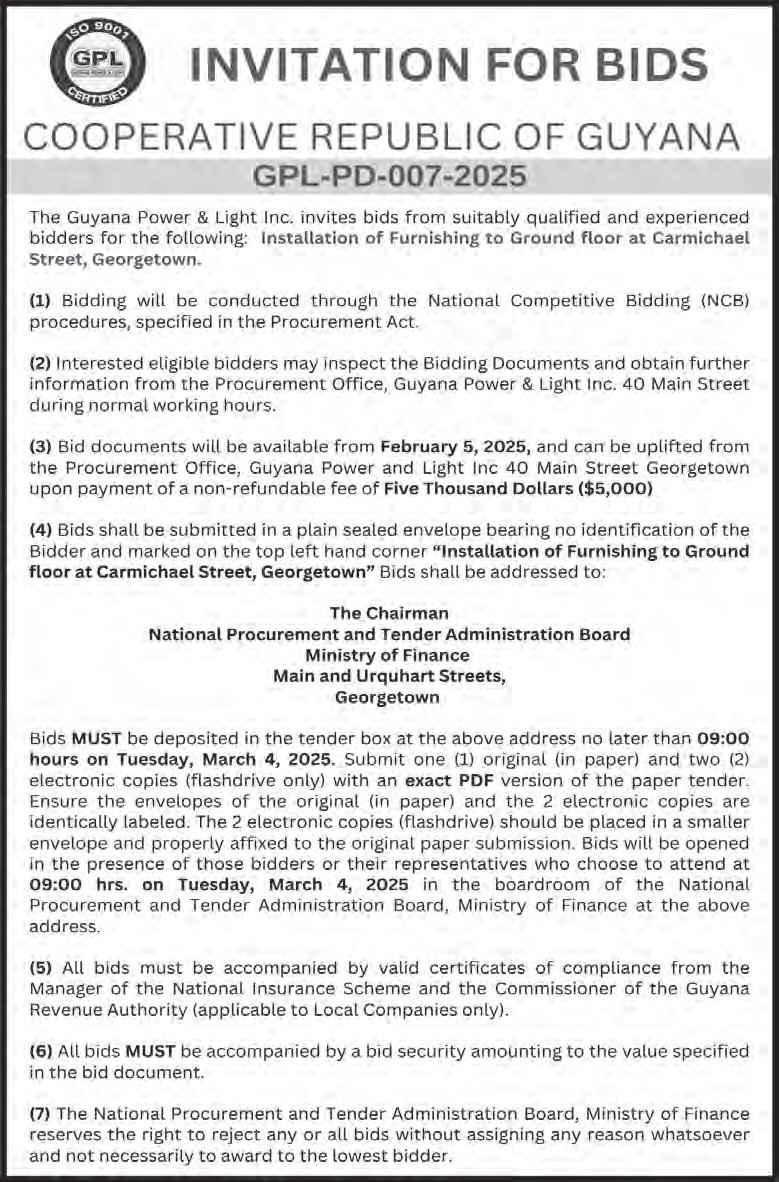
established by the United States, ensuring accuracy and reliability in data collection. This approach allows for precise assessments of both ambient and impacted air quality across multiple environmental parameters.
based on the concentration of key pollutants, including:
Key Aspects of Environmental Monitoring for Air Quality at the EPA Air Quality Indicators Air quality is measured

• Particulate Matter (PM2.5 and PM10): Fine particles that can be inhaled into the lungs, causing respiratory problems.
• Nitrogen Dioxide (NO2): A pollutant produced by vehicles and industrial processes that can irritate the respiratory system.
• Sulphur Dioxide (SO2): Emissions from burning fos-
sil fuels that can lead to acid rain.
The EPA currently operates ambient air quality sensors, with five already deployed in Regions 2, 4, 6, and 10. An additional eight
sensors are scheduled for installation in 2025, further enhancing air quality monitoring and research efforts. Additionally, the Agency utilises handheld and porta-
TURN TO PAGE XIV

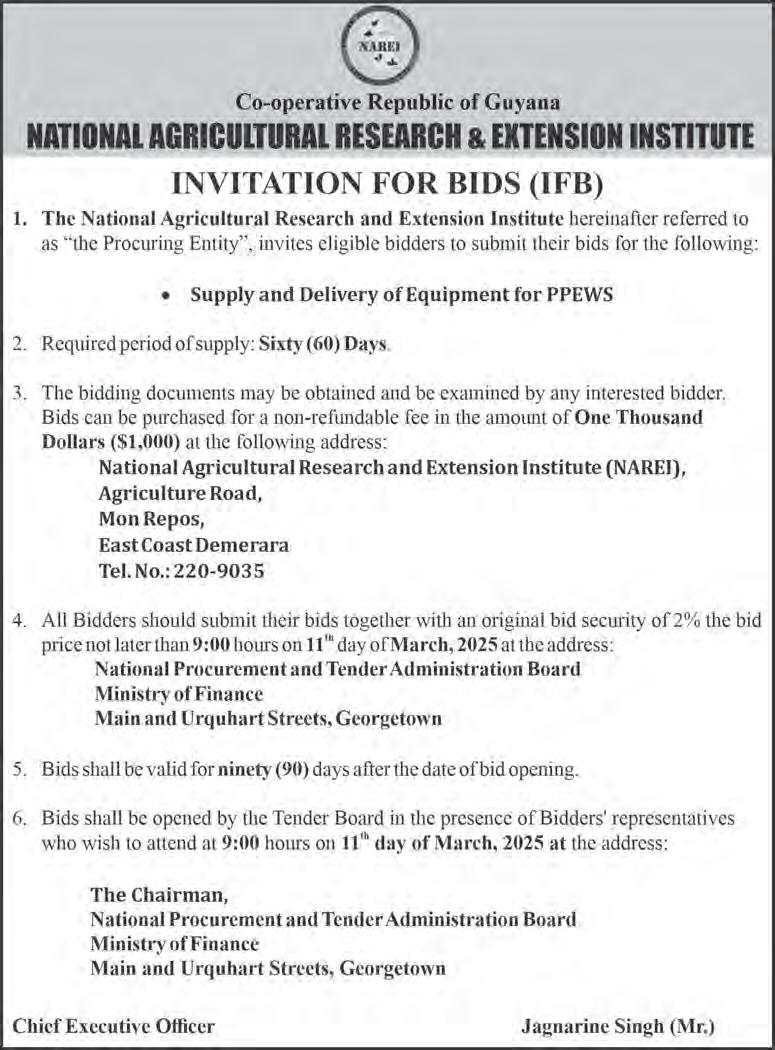

FROM PAGE XIII
ble devices for mobile monitoring. This approach allows officers to assess air quality in real time, particularly for compliance audits, authorisations, and complaint investigations.
The deployment of ambient monitoring equipment enables the EPA to establish long-term air quality trends, strengthen its national air quality inventory, and better understand the climatic implications of air pollution as Guyana navigates the challenges of climate change.
Monitoring Tools and Technology
• Remote Sensors and Station Networks: The Agency’s advanced remote monitoring capabilities include station-based air quality monitors that measure various pollutants and track their concentration in real-time. This data is crucial for providing public alerts, espe -
cially during high pollution events.
• Satellite-Based Remote Sensing: Satellites track large-scale air pollution across regions, providing valuable insights into global air quality trends.
The EPA remains at the forefront of environmental protection, employing advanced equipment to detect pollutants and provide data-driven insights for regulatory enforcement and policy-making. The expansion of monitoring capabilities underscores Guyana’s commitment to environmental sustainability as the Agency continues to strengthen its efforts to safeguard public health and ecological integrity.
How You Can Help Protect Air Quality
Protecting air quality requires collective action. Here’s how you can contribute:
• Reduce Emissions: Use clean energy sources, such as wind and solar power, and opt for electric vehicles to reduce pollutants from burning fossil fuels.
• Raise Public Awareness: Educate others about air quality and actions they can take, such as reducing car
usage, conserving energy, and avoiding outdoor activities during high pollution periods.
• Use Public Transport: Reducing the number of cars on the road lowers emissions and improves air quality.
• Conserve Energy: Use energy-efficient appliances


and turn off lights when not in use to reduce overall demand on the power grid.
• Support Green Initiatives: Advocate for businesses and policies that prioritise sustainability to help reduce pollution on a larger scale. Environmental monitoring of air quality is key
to understanding pollution trends and managing its effects on both human health and the environment. By utilising advanced monitoring systems, gathering data, and taking action, we can protect the air we breathe and promote a healthier future.

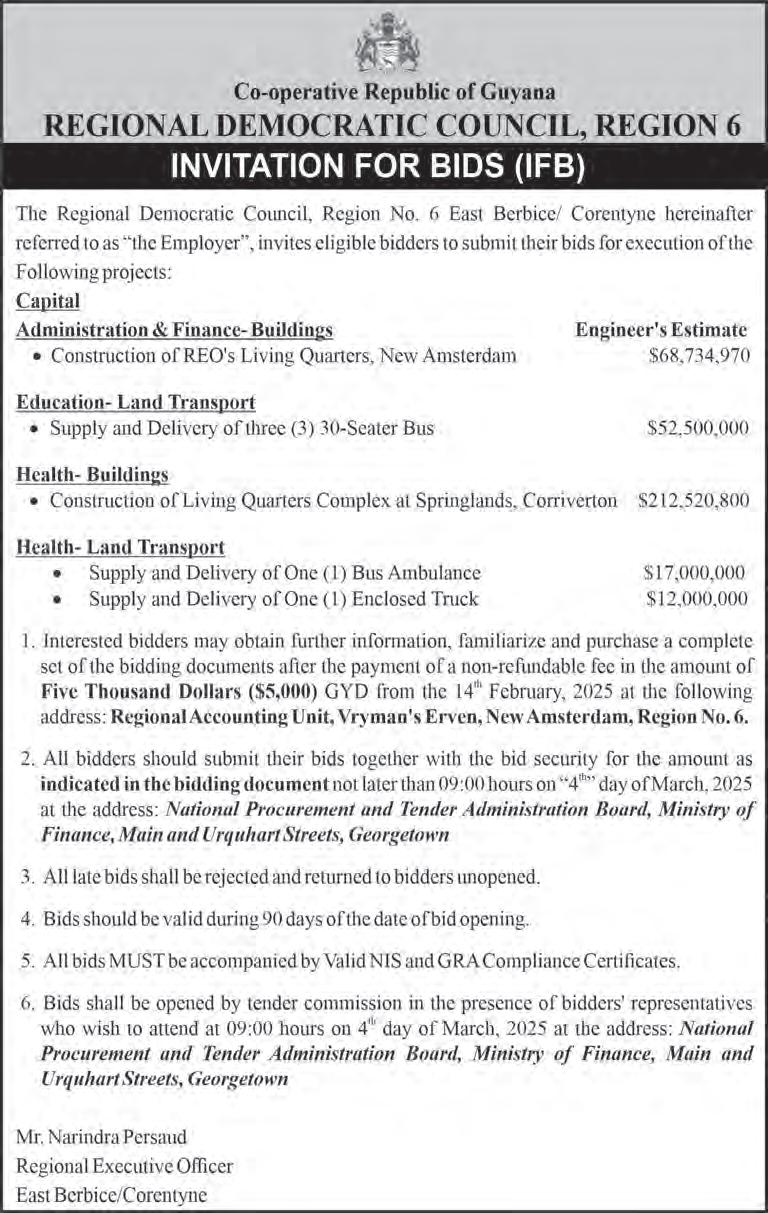





THOSE of us who are still surviving and knew the University of Guyana from its beginnings and were associated with it from those early days feel deep, victorious satisfaction as we see the University grow from strength to strength.
In the early 1950s,
Guyana’s political leadership felt the deep need to emancipate the country from colonialism. However, much of the population still held the ingrained assumption that the tertiary educational institutions of the colonial power, Britain, were so superior that it would be ludicrous
for Guyana to attempt to initiate such institutions— even as an independent country. Many believed that Guyanese should continue to go abroad for higher education.
Dr. Cheddi Jagan, the most visionary political leader at the time, felt that Guyana had to embark

on establishing its own University so that higher education would be accessible to all Guyanese, not just a tiny elite who could afford the cost of a British education. He was fully aware that the University of Guyana would not initially match the standards of Cambridge, Oxford, or even his own alma mater, Howard University, but he was confident that it would grow in quality over time. By founding a local university, all Guyanese youth would now have the opportunity to pursue higher education, and employers would have access to a trained work-
force.
Despite strong opposition from a large segment of the population—including members of his own party—Dr. Jagan unflinchingly launched the University. Many critics predicted that it would soon fail. Since classes initially took place at Queen's College after 5:00 p.m., with a mostly parttime teaching staff, the institution was mockingly called "Jagan's Night School."
However, the University persisted and eventually held its first graduation. It was later granted 100 acres of land at Turkeyen
by Bookers for its campus. The Canadian government assisted in the construction of much-needed buildings, which were initially wooden structures, and the University began to expand. Over the past 60 years, several of its programmes have gained international recognition. Many of its graduates have been accepted into some of the world’s most prestigious universities to pursue higher degrees, and today, University of Guyana graduates hold prominent positions both locally and internationally. Although the Universi-
TURN TO PAGE XVII

ty’s impact on society and the respect its graduates earned worldwide were well-recognised, the institution itself had never been formally conferred with the recognition that other such institutions received. Educationists and academics understood the immense value of formal accreditation, as it would allow both the local and international public to fully appreciate the quality of the University and its vital contributions to society.
The accreditation journey Recognising this, the National Accreditation Council, led by Dr. Mohandat Goolsaran and with Vice Chancellor Professor
Paloma Mohamed-Martin and Deputy Vice Chancellor Professor Emanuel Cummings serving as key members, embarked on the challenging task of accreditation.
To ensure a rigorous evaluation, five i nternationally renowned non-Guyanese evaluators were engaged to assess the University across multiple dimensions. They spent two weeks conducting an in-depth review of all aspects of the institution, emerging with a score of nearly 100%. A follow-up evaluation will be conducted in five years, but for now, the University of Guyana has secured its place as an accredited institution
on the global stage.
The Benefits of Accreditation
T he advantages of formal accreditation are numerous:
• Increased Funding and Resources: Accreditation attracts greater funding and opportunities for collaboration and partnerships with other universities and equivalent institutions.
• Enhanced Trust in Degrees: Students, faculty, employers, and the p ublic can now have greater confidence in the University’s degrees.
• Stimulated Continuous Improvement: Accreditation encourages ongoing self-evaluation and improvement to

maintain high standards.
• Seamless Credit Transfers: Students can more easily transfer their credits to international universities when pursuing further studies.
• Attracting and Retaining High-Calibre Faculty: Accredited universities draw in highly qualified faculty members, enriching teaching and research.
A University led by its own graduates
Another remarkable aspect of the University’s growth is that today, its
leadership and staff are predominantly products of the institution itself. This speaks volumes about its capacity to nurture and develop worldclass professionals.
A distinct feature of the accreditation process was the infusion of Guyanese cultural elements i nto traditional evaluation procedures. Vice Cha ncellor, Professor Paloma Mohamed-Martin and Mr. Jainarine De onauth, Director of Events, Conferences, and Communications, played
integral roles in ensuring this process maintained a distinctly Guyanese identity.
Professor Mohamed-Martin’s deep empathy for both faculty and students, along with her active involvement in all aspects of University life, has positioned her as a n exceptional leader. Her vision for transforming the University of Guyana into a truly international and world-class institution is steadily becoming a reality.


IT’S 2025, and around the world, it’s a year known for many reasons, but for Guyana, it is our year for another general election.
I c an recall the last general election vividly, mainly because it was my first time voting. I remember not be ing enthusiastic at first, but after engaging in a voter educa-
tion informational session, my perspective o n voting changed. As such, while we still have some time before our general election, I know many young

people like myself are still considering what to do on Election Day. Is it worth it to vote? What is the significance of voting? Does my vote count? These questions and more remain unanswered for many young people in Guyana, and I am here to enlighten
you on the importance of the youth vote.
I am not writing this column to tell you who or what to vote for. Instead, I want to discuss some of the unanswered questions regarding the youth vote. First and foremost, voting gives you direct control over who you would like to
lead your country. The leaders you vote for determine the type of healthcare you access, the quality of education you receive, and even the amount of money you make—just to name a few. According to GECOM, an average of 45 per cent of the
TURN TO PAGE XIX

FROM PAGE XVIII
electorate comprises youth voters, specifically those between the ages of 18 and 35. While there is still room for improvement in youth voter turnout, it is undeniable that the youth vote is crucial in deciding who leads our country, given our large youth population.
Youth voter participation ensures that young people vote for candidates and policies
that align with their values and principles. It is also important because when youth voters highly influence an election, national leaders are more likely to listen to and support youth-related policies and objectives. Young voters collectively have the power to ensure that decisions are not homogenised and that power is shifted when necessary.
As a young voter myself, I vote because
it is my civic duty and obligation. Voting is not only important in a presidential election; it is an integral part of choosing who leads our churches, who heads our youth groups, who becomes our town’s mayor, and what local policies we want to support.
Young people, in general, bring fresh and new perspectives to political and social issues. In fact, history has

shown that young people have always been at the forefront of movements such as women’s rights, LGBTQIA+ rights, and climate action. Voting also allows us t o set a precedent for future generations. When young people show up to vote at polling stations, it is often re corded in the news, serving as a reminder for future generations to exercise their right to vote. By voting now
as young people, we are setting the stage for habitual voting among future youth voters.
These days, young people are often influenced by “trends” and wh at’s “popping” on social media or online.
As such, we must make voting “trendy” this season to ensure we elect the best possible candidates—those who align with our beliefs and values as young voters. Voting in this
election will help transform Guyana into the land we want t o stay in and build our lives in—for ourselves and our future families.
Be sure to get registered soon and check the lists at your local GECOM office to ensure that your name i s included. I hope you don’t take your democratic right for granted and that you exercise it this election season.



THE stars stand as sentinels, watching over our planet and our solar system as they gradually transform and evolve. The size and shape of planets within the solar system may have changed over billions of years. Perhaps even the speed at which they rotate around the sun has slowly altered. Yet, the most intriguing form of evolution is surely that of the human beings who occupy the earth. The way we have transformed as a race is a captivating tale, with many lessons for us to learn as we continue to grow.
As we learn about our past, however, we must remember that history is a fickle storyteller. It bends and reshapes itself easily under the will of those who held more power when it was written. Thus, it has become the responsibility of those who hear these stories to determine the validity of the tales passed down as truths.
For instance, we are all familiar with the quote, “Let them eat cake.” It is a phrase attributed to the late French queen Marie Antoinette, whose death symbolised the end of the French monarchy. The phrase is said to have been her response upon hearing that her subjects were suffering from hunger, without even bread to eat. These words have since represented the
disconnect and indifference of the ruling upper class towards the struggles of the working class.
Yet, the truth is quite different from the version that was spread about her. Despite her extravagance, Marie Antoinette was also charitable and attentive to the needs of her people. She removed certain taxes, established charitable organisations, built housing for those in need, and even adopted children. In fact, her final words are said to have been an apology to her executioner for accidentally stepping on his toes.
Marie Antoinette was only fourteen years old when she was married to Louis XVI. She was a foreigner and extremely young when she became queen, and France was already in debt at the time. While she may not have been the cause of her subjects’ suffering, she became an easy scapegoat for their struggles.
Marie Antoinette’s story is just one example of how history has unjustly changed or erased certain narratives over time. Many historical events and accounts of suffering have been rewritten to serve the agenda of those who chose to manipulate them. This does not only mean that numerous instances of injustice and courage remain untold, but it also means
FROM
PAGE XX
that there are valuable lessons we may never learn—mistakes that we may be doomed to repeat.
Our collective history is our most valuable possession. If each generation were unable to pass down knowledge
to the next, we might never have evolved beyond primitive beings. More importantly, if each new generation failed to analyse and apply that knowledge, human progress would have been stunted.
The world is filled with lessons worth
learning, yet many of them are forgotten or hidden. They are embedded in the stories our grandparents tell us, in conversations with wise strangers, and even in the questions we never think to ask. As we prepare ourselves for the re -

sponsibility of shaping the future, we must first learn to appreciate and understand the stories upon which our world has been built.
The traditions, culture, and knowledge passed down from previous generations are not just fragments of
history—they are the essence of our identity. Therefore, we have a duty to seek out the most accurate version of these valuable lessons and to preserve them whenever possible.
Whe n we fail to seek and record the
truth in history, we also fail to provide future generations with the opportunity to evolve. Every lesson worth learning is also worth recording and protecting for those who will come after us.


WHAT were the activities recorded by 17th Century biographers who visited the savage realms of slavery? What humane activities were allowed and existed to create a semblance of normalcy?
In revisiting some of those scribes over the years, I found some facts that I would like to share; accounts from
the literature of the day that cast light on drama and entertainment. One such author described American performers,
whom he referred to as strolling players, who entertained as they travelled.
“Twice during my
six-year stay, they came to Stabroek, having previously made a tour among the islands. The
TURN

FROM PAGE XXII
company consisted of but four or five persons. They had charted a vessel in New York, embarking with a cargo of canvas palaces and painted forests, crowns and daggers, sceptres and chains, the purple attire of majesty, and the motley foppery of folly. At Grenada and Barbados, they u npacked their portable theatre and were well received with applause.”
The author noted that, despite charging two dollars for each performance, the troupe had managed to draw large audiences. During their travels, they had also enlisted Afro-Caribbean actors from the French islands. However, in his commentary, the writer reflected the biases of his time, stating:
“There are few Moorish characters on our [European] stage, except Othello, Juba, and Oroonoko, which they could personate with propriety. In an illiterate community, which can only learn through the ear, drama is an important engine of instruction.”
— Henry Bolingbroke, A Voyage to Demerary (1799–1806)
However, despite the significance of such performances, racial prejudice often overshadowed even the most evident contributions of Afro-Caribbean individuals.
Turning to The Story of Georgetown by Ja mes Rodway, we find an informative document outlining the shaping of wards and villages. However, in the context of relating
Georgetown’s human history, Rodway’s perspective is questionable. One particularly striking passage describes the opening of a panorama of Stabroek in 1811 on the site of the present waterworks:
“Mr. Bryant, portrait and scene painter, was the parent of the work, the only instance of its kind ever known where an individual undertook such a task without any assistance, except the mere automaton help of a ‘slave’.”
The casual dismissal of the contribution of enslaved individuals reflects the prejudices embedded in historical accounts. Interestingly, the same Mr. Bryant later published A History of the East Coast Insurrection in 1824, illustrated by lithographs, the only illustrated book ever produced entirely in the colony.
Accompanying this article is an image from Bryant’s work, demonstrating that such efforts required more than mere “automaton help” but rather the skilled artistry of individuals whose names history has largely erased. However, it was not Bryant’s narrative alone that carried this dismissive tone. In White Debt, author Thomas Harding provides a synopsis of James Rodway, shedding light on his biases and those of Bolingbroke. Harding’s book should be a staple in any library for readers interested in understanding the true foundations of our nation.
Stay wise and seek to understand the society we live in.






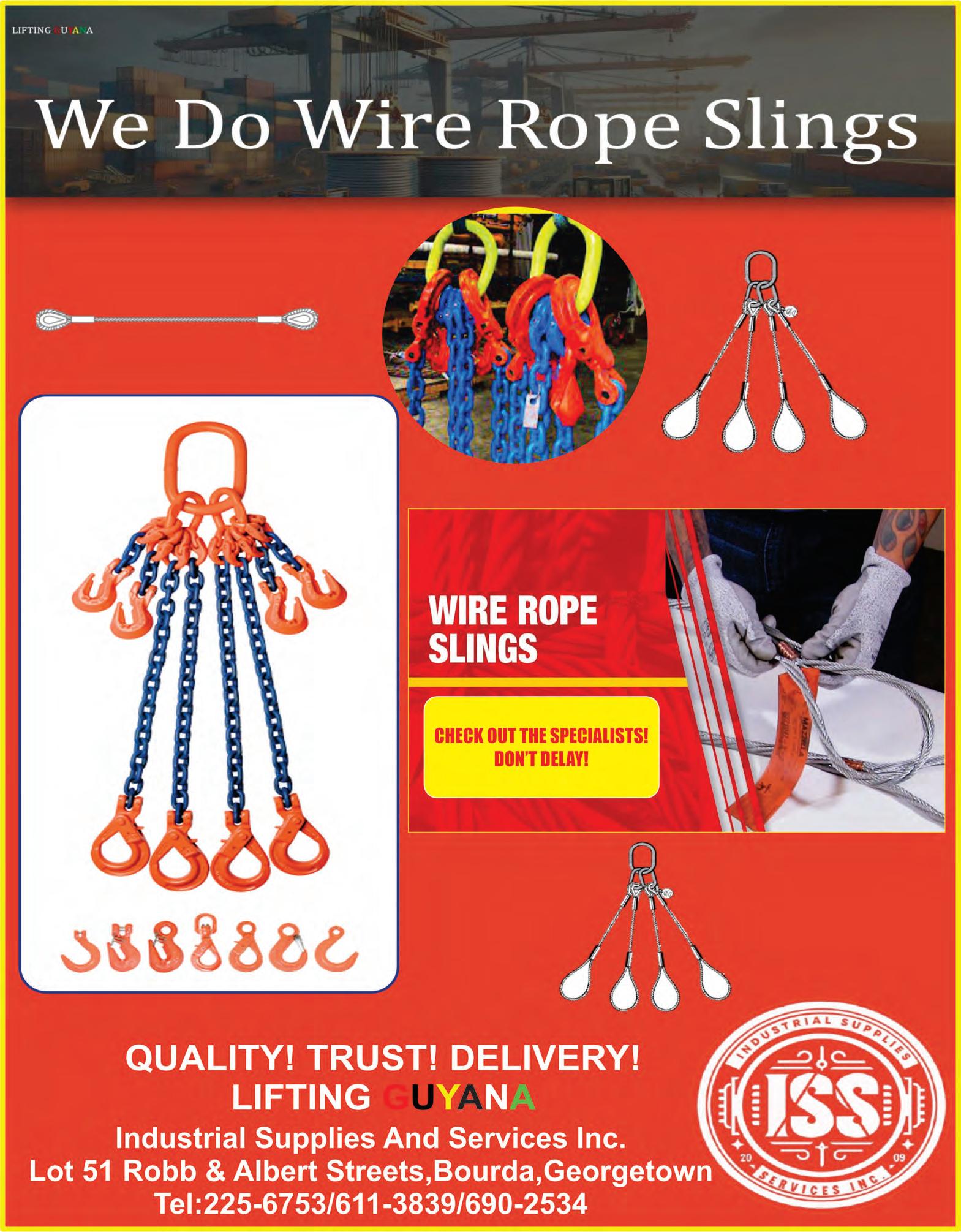




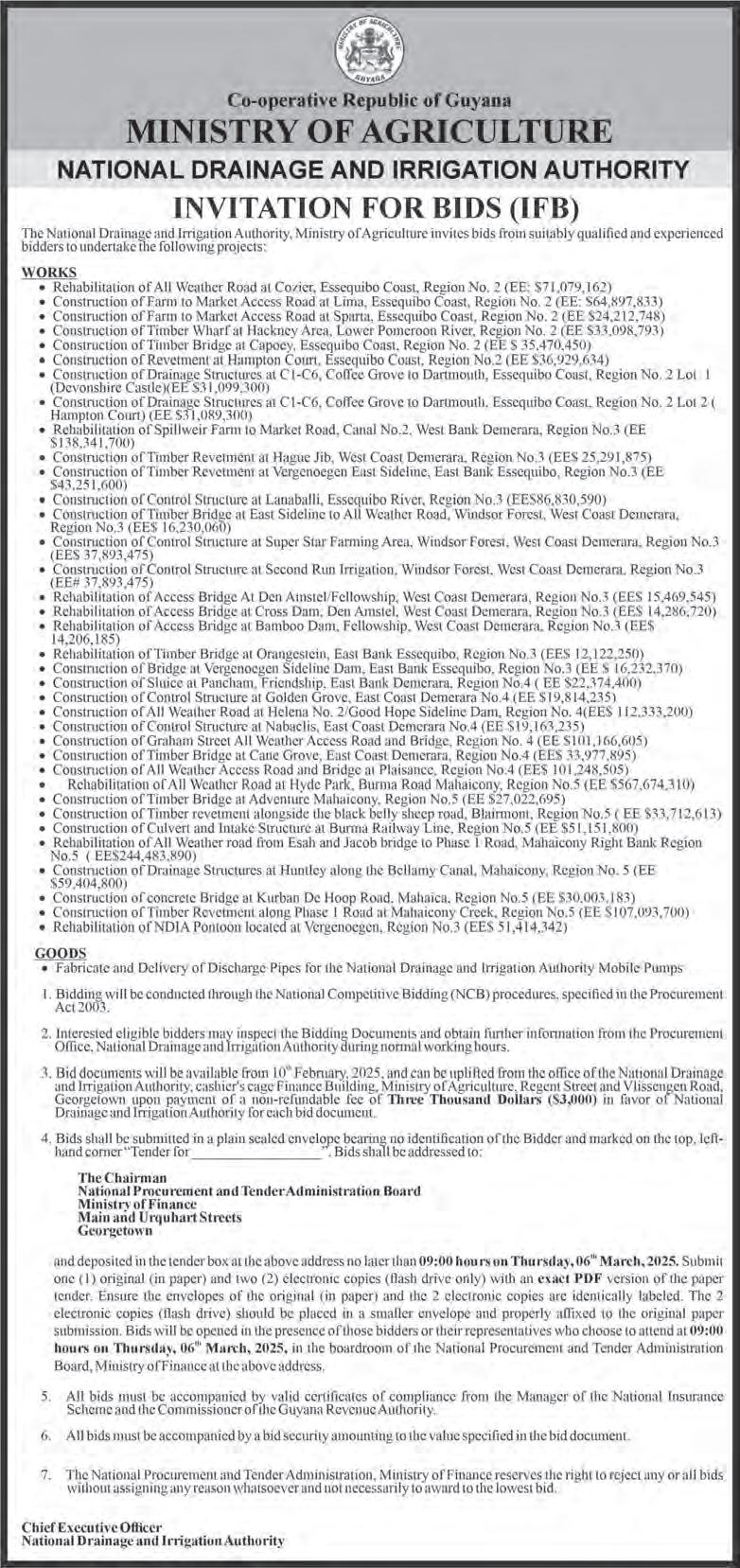
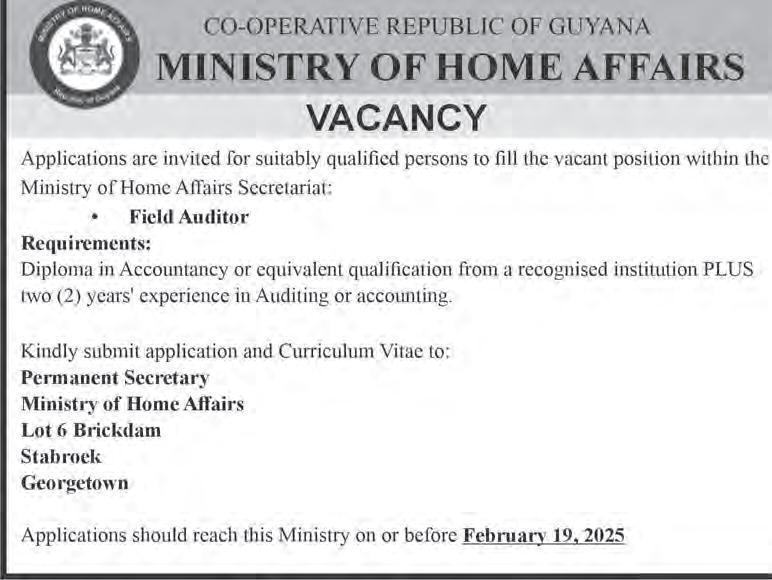





















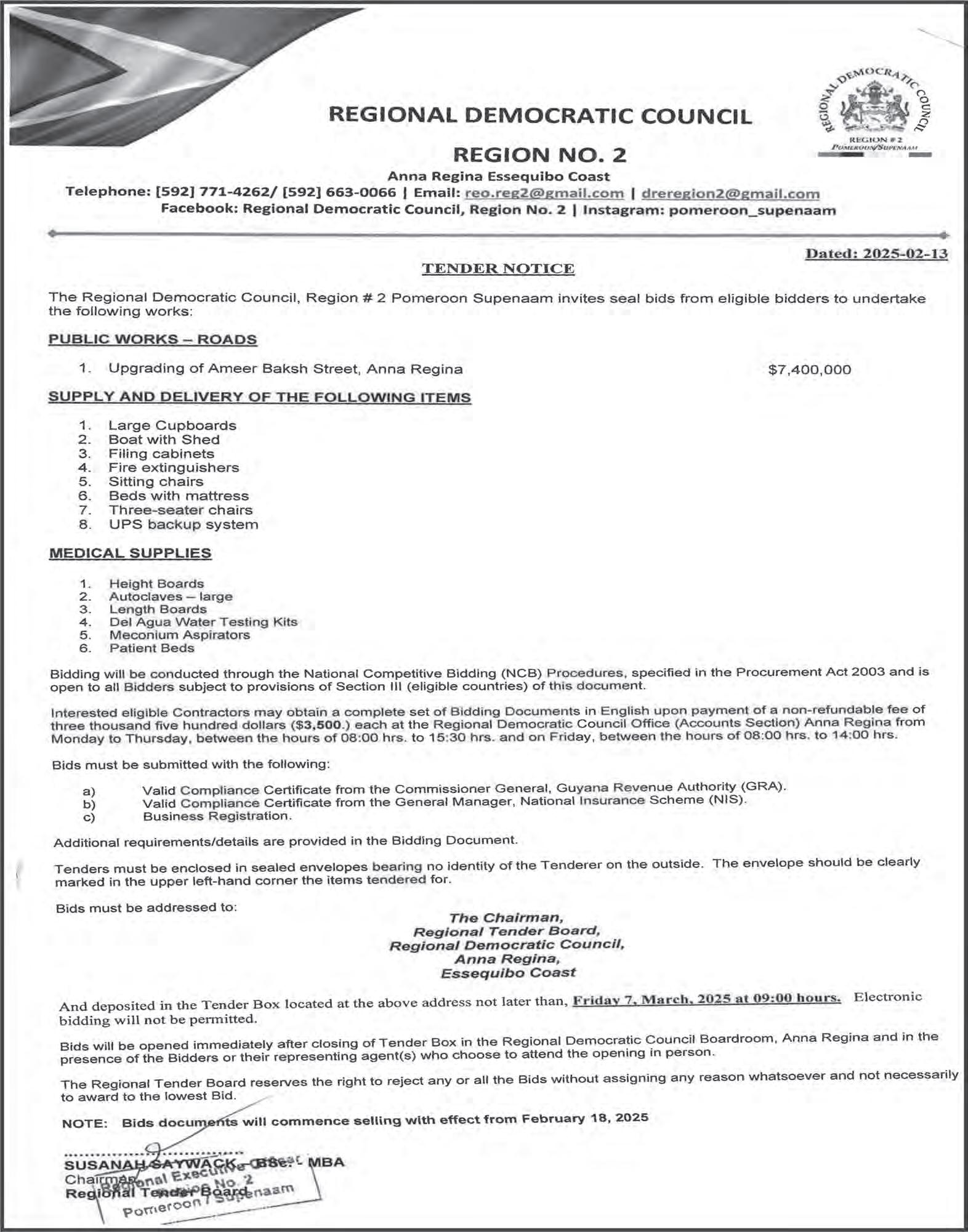







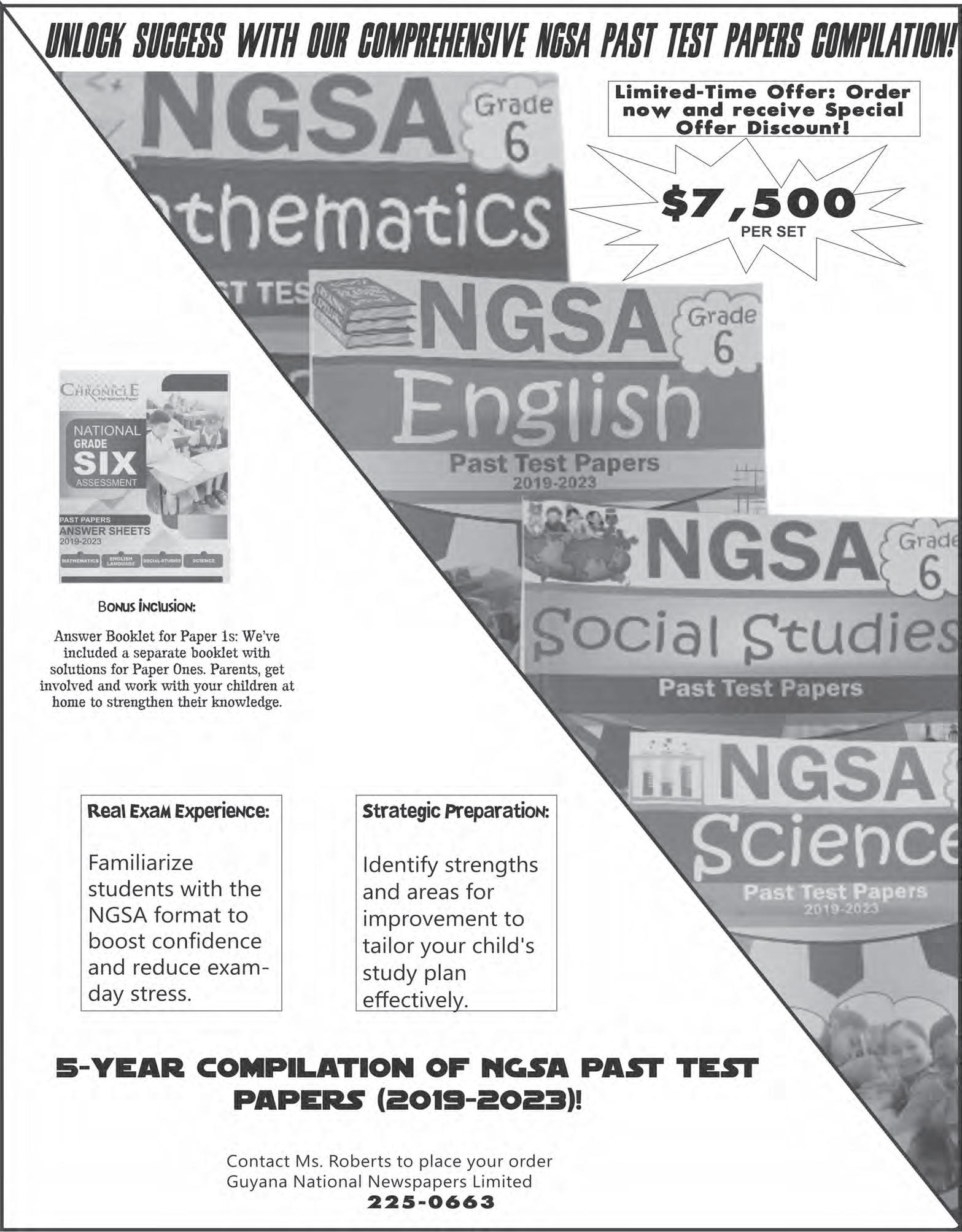



STUDY SUCCESS
Dear Student, Welcome dear reading friend. Your ability to recognise prejudice and bias i n diverse text types improves with understanding the communicative value of texts, and their interpretation. Sound reading makes you realise that most writers are prejudiced in some way and try to influence readers to look at things like they do.
‘Slanted writing’ appears in headlines, sentences, and paragraphs, and ranges from most biased; if biased for or against; or what it is biased for or against. Be wise. Love you.

February 16, 2025
THE EXCERPT
Comprehension of a passage
Note: A comprehension exercise is meant to test a candidate's ability to understand and retain the contents of a given passage. It is part of a language course that tests a student’s understanding of the language used by given writers and consists of questions based on a given text (a passage of one or more paragraphs). Comprehension practice supports the development of a student's foundation for higher-level thinking across various subject areas. Read the following passage below carefully and then answer all the questions that follow
Formal education, commonly referred to as schooling, can be defined as a country’s system of compulsory teaching and learning. But as one writer suggested, there is a difference between schooling and education. The objective of schooling is to reinforce what exists in society and this is largely influenced by what governments do t hrough the availability of resources. Education is a broader learning activity not confined to the classrooms.
Schools, colleges and universities have long carried out the business of formal education by using the traditional ‘chalk and talk’ teaching methods. In recent times, however, this education has been changed by the introduction of technologies by which the students themselves are involved in acquiring knowledge. Chalk and talk approaches in front of a class with students in the same place have been replaced by the technology that allows students to participate from any location at any time.
Despite this introduction of the latest technologies, education still has to encourage students to change the way they look at the world, students themselves are involved in acquiring knowledge, and the mastery of life skills which take place both inside and outside the formal classroom.
(Adapted from Sandra Richard’s “Assessing the Role of Education in the Real World”)
Live all you can; it’s a mistake not to.
The Ambassadors (1903), Bk. 5, ch. 2
(a) According to paragraph 1, what is formal education?
(b) What word can be used to replace “objective” in sentence 3 of paragraph 1?
(c) According to paragraphs 2 and 3, give two advantages of using technology over “chalk and talk”?
(d) De spite these technologies, mention what education still has to do for students?
(e) Explain the following phrases found in paragraph 3: (a) change the way they look at the world; (b) students themselves are involved in acquiring knowledge; (c) the mastery of life skills.
THE POEM
Comprehension of a poem
Note: Poetry comprehension requires the reader’s deeper understanding of poetic devices and literary expressions and determines how these two meanings interact and intersect.
You can understand a poem by considering the subject and form of the poem as well as the style and the context. Your acquaintance with these areas comes from practising small passages first, and also to realise that complete understanding, as with any poem, will not come after one reading.
Read the poem below carefully and then answer all the questions that follow.
I watched the islands narrowing, the fine
Writing of foam around the shore, then
The roads as small and casual as twine
Between the mountains; I looked until the plane
5. Turned to the final north and turned above
The open channel, and the quiet sea between
The fisherman’s islets, until all that I love
Was lost in cloud. I watched the shallow green
That marked the places where there must be reef,
10. The silver glinting of the fuselage, each mile
Dividing us, and all fidelity strained
Till space would break it, and then after a while I thought of nothing, nothing I knew would change.
When we arrived at Seawell, it had rained.
(Derek Walcott’s “Tales of the Islands”)
1. What does the speaker mean by the word “narrowing” in line 1?
2. Why is the island described as “narrowing”?
3. (i) Identify one literary device used between lines 1 and 5. (ii) Quote the words for the device chosen.
4. Give an analytic response in a few sentences for this poem by Derek Walcott, in terms of either its irregular rhyme scheme or haunting imagery.
5. What is the location from which the speaker describes the experience.
6. What is meant by: (a) “until all that I love Was lost in cloud.” (b) “I watched the shallow green.” (c) “and all fidelity strained.”
GRAMMAR
Copy the following sentences. Supply semicolons and commas where they are needed.
1. Although I prefer mathematics and science to English, I realise that all three subjects are required consequently I shall do my best to master them.
2. He searched unceasingly for the man who possessed the secret document t hrough the resorts and villas of the Mediterranean where the independently wealthy may indulge in idleness and leisure in the jungles of Africa where the torrid breath of disease and pestilence brought him close to the door of death and in the frozen waters of the Arctic where no man had been known to survive.

RESPIRATORY and swallowing movements are activities that have been noted in utero. In fact, it is not unusual to detect a fetus sucking their thumb as early as four months before birth. At birth, the infant exhibits two reflexes related to sucking. The root reflex, which lasts until the child is approximately seven months old, is the movement of an infant’s head and tongue towards a stimulus touching the infant’s cheek.
The sucking reflex—the active movement of the infant’s muscles surrounding the mouth—expresses milk from the nipple and lasts for approximately 12 months. To obtain milk from the mother’s breast, the infant does not need to suck but instead stimulates the smooth muscle in the breast to contract and express milk onto the tongue. This is called suckling. The milk is carried to the throat and gullet by the tongue. The infantile swallow does not occur in the same way as it does in adults. It is characterised by the infant placing their tongue beneath the nipple, contracting the lower lip, and swallowing with the lips together and jaws apart.
From a medical perspective, it is not unusual for a child to suck a finger or, sometimes, even a pacifier until the age of 30 months. However, if the habit persists beyond that age, the damage done to the oral structures may require corrective procedures.
In fact, when a child over the age of three habitually sucks their fingers, it can give rise to 12 different harmful effects, which may lead to disfigurement of the entire dentition, upper and lower jaws, lips, and palate. The consequences—depending on the frequency, intensity, and duration of the habit—almost always result in an alteration of the child’s
natural facial features.
The term adenoid facies has been used to describe the facial appearance of patients with a long face and anterior open bite. This condition often stems from habitual mouth breathing. More specifically, these patients demonstrate a downward and backward rotation of their lower jaw during growth, excessive eruption of posterior teeth, upper jaw constriction, anterior open bite, and increased anterior (especially lower) facial length.
We must remember that the main functions of the oral cavity are respiration, swallowing, mastication, and speech. The ultimate shape of the lips and jaws may not be determined by genetics alone but also by habitual behaviour. Newborn infants are obligatory nasal breathers, but the mandible (lower jaw) and tongue must be positioned away from the throat for the airway to remain open. If nasal breathing becomes obstructed, oral breathing must commence, which can lead to complications. Respiratory needs, therefore, can be a primary determinant of lower jaw posture and tongue position in later years.
A multitude of factors influences the early growth and development of the facial region. Habits can affect the orofacial structures and influence facial growth, oral function, occlusal (bite) relationships, and facial aesthetics. In other words, a child may even grow up not resembling their parents due to certain deleterious habits formed during their early years.
On the other hand, the adult swallow is characterised by a tooth-together swallow, with the tongue against the palate and lips relaxed. The transition from the infantile way of sucking to the adult way is gradual, and disruption of this normal process can result in abnor-
mal physical changes in the middle and lower sections of the face.
The instances in which harmful habits during
childhood can modify a person’s facial appearance are too numerous to mention here. However, the advice given is that
professional intervention should be sought whenever a young child is observed practising abnormal oral habits.


